Expert analysis and characterisation of metal and non-metal materials
Characterising, analysing and understanding changes in materials throughout their life cycle and up to a possible failure is a major challenge for companies in the industrial sector.
Read the full case study:
Study Case Expert analysis and characterisation of metal and non-metal materials
The French Railway Test Agency (AEF) has a centre of expertise dedicated to the expert analysis and characterisation of materials. Two teams are tasked with studying metal materials and non-metal materials.
Our laboratory experts offer various services, including failure analysis, potential studies and new product qualification. They also have the capacity to act in expert appraisals and judicial inquiries.
Our laboratory experts offer various services, including failure analysis, potential studies and new products qualification. They can take part in the elaboration of specifications and are able to act in expert appraisals and judicial inquiries.
Expert analysis and characterisation of metal materials
Eurailtest and its laboratory can offer three types of service for analysing metal materials. These expert analyses can be conducted on any type of metal component or part.
- Potential studies
These studies help to determine the potential life cycle of a component and understand and predict its ageing process.
This type of study can be used in maintenance engineering to optimise the steps for intervention and the use of parts and components, while ensuring maximum reliability.
- New product qualification
AEF’s materials centre of expertise characterises the products prior to or as part of their commercialisation. This mainly serves to check that a product or material complies with user specifications.
- Failure analysis
If a metal part or component fails or breaks, an investigation and expert analysis may be conducted to identify and understand the causes. We can examine the relevant components in our laboratory or in situ using mobile equipment.
These analyses provide the bases for identifying the causes of a failure, defining the precise moment the break occurs and obtaining information on the stress levels. A thorough expert analysis of the parts and specific calculation methods are also used to simulate stress.
These analyses have numerous objectives, helping to explain the causes of a failure and how to avoid them by optimising operations and maintenance steps. Direct action can also be taken on the component concerned and its materials, and possibly on the stresses encountered.
We can also perform failure analysis as part of a judicial appraisal, either for the industrial sector or more specifically for the rail sector.
In addition to its solid experience, our analysis laboratory has access to extensive data from the rail sector and the support of a wide network of experts.
Below are two case studies of metal materials expert analyses.
Focus No. 1: example of expert analysis conducted for a derailment
Background:
Harmless derailment of a train due to a broken axle.
Analysis objective:
The AEF was commissioned by the train’s maintenance provider to investigate and determine the cause of the failure.
Works:
First, the AEF’s teams went urgently to the site to identify the preliminary factors involved. An infrastructure failure was immediately ruled out, allowing the AEF to focus on the damaged axle.
The axle was subsequently delivered to the AEF for a thorough laboratory analysis and investigation into the causes of cracking.
An expert analysis was conducted in three stages:
- Various tests were performed (visual, optical microscope, electron microscope) to identify the area where the fault originated and the type of cracking (sudden break or fatigue).
- Mechanical tests were conducted to check that the axle complied with the benchmark standards in force.
- The area where the break occurred was analysed and inspected to try to estimate the time needed for the crack to propagate until the axle broke.
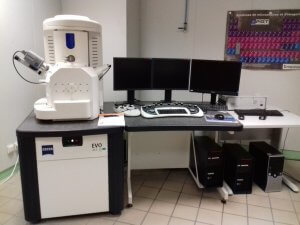
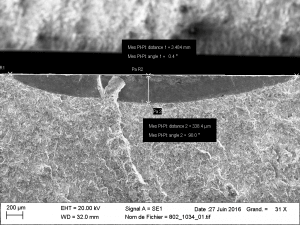
All these inspections and tests were conducted on the entire damaged axle and/or on the broken and damaged parts of the axle.
The AEF was able to draw on its knowledge of this type of axle and previous findings.
Results:
The axle’s characteristics complied with expectations and were not linked to the incident. The likelihood of a manufacturing fault was thus ruled out.
The type of break was determined. Fatigue failure was identified on two-thirds of the axle before it finally suddenly broke.
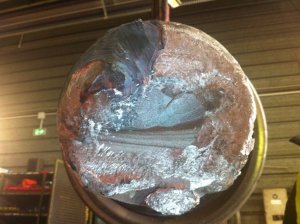
The area where the cracking originated was located. The results were therefore correlated with the maintenance rules and operations to better understand the phenomenon.
Follow-up action:
Investigative work was conducted in close cooperation with the maintenance provider on the procedures for handling axles during maintenance. This work led to the definition of new operational conditions and an update of the corresponding standards.
The AEF can offer this same type of analysis for components used outside the rail sector. These include transmission components, gears, pulleys, motors, etc.
Focus No. 2: example of expert analysis on a crane
Background:
Failure and collapse of a crane during a loading operation.
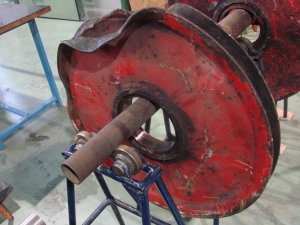
Analysis objective:
The AEF was commissioned by an expert appointed by the Paris courts as part of an expert appraisal. The objective of the analysis was to determine the cause of failure in the lifting hook.
Works:
The AEF’s experts first visited the site to make an initial assessment. The relevant components were then recovered for a thorough analysis in the laboratory.
Various inspections (visual examination, micrography, macrography, fractography, dimensional measurements, analyses of chemical compositions) were conducted to determine the origin of the faults and the degradation mechanisms at work (fatigue, sudden break, direction of applied forces, etc.).
Results:
An expert analysis of the various components helped to understand the origin of the degradation observed and the likely chain of events that led to the hook breaking and the crane collapsing.
Follow-up action:
The observations were presented to the parties concerned and several hypotheses were submitted for the purposes of the judicial appraisal and inquiry.
An investigation was conducted on some of the hook components to expand on the preliminary observations made.
The entire procedure was conducted in accordance with the rules applicable to judicial inquiries.
Non-metal materials
The Railway Test Agency also has expertise in characterising and analysing non-metal materials.
For rubber-metal, elastomer and suspension components, etc., our laboratory can perform:
- Measurements of the elastic limit and tensile strength of materials
- Mechanical and ageing tests
- A study of ageing effects associated with the environment
- An analysis of chemical components: work is conducted in cooperation with the AEF chemical laboratory for a complementary approach.
Focus No. 3: example of analysis of a non-metal material
Background :
Characterisation of rubber-metal suspension components mounted on tram-train rolling stock.
Analysis objective:
The AEF was commissioned by a maintenance facility to determine the condition of components removed from service mid-life to learn if they will achieve their potential (life expectancy) and if a deferment of potential is conceivable.
Works:
The AEF initially conducted studies and designed mechanical interfaces to perform tests.
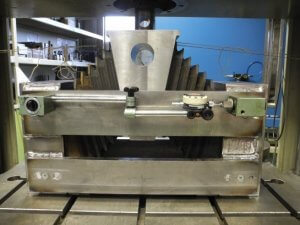
Mechanical tests: axial, radial and torsional strength were measured to identify changes in mechanical properties and compare them with the values for new components.
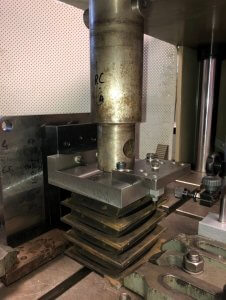
An elastomer characterisation was conducted using chemical methods: infrared, thermogravimetric analysis and DSC to determine its condition and observe its degradation.
Lastly, the elastomer was analysed (components dissected and visually inspected) to observe the presence of internal defects and to correlate this analysis with the mechanical findings.
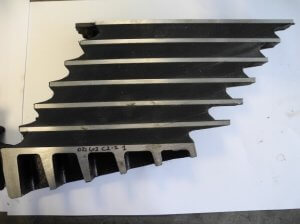
Results:
An expert analysis of the various components allowed us to observe their condition at a given time and provide an assessment of their potential. The samples of suspension units removed at half-potential did not present any external degradation and their characteristics even remained in line with the tolerances of new components after ageing.
Follow-up action:
Complementary expert analyses were requested for a greater number of kilometres travelled, to confirm or disconfirm the trend for this type of material.
Eurailtest, alongside its partner laboratories, can intervene at any time during the life cycle of a component or material to characterise and/or conduct an expert analysis of it.
Equipment manufacturers, maintenance providers, operators and court-appointed experts can call on these laboratory services to analyse and understand failures, conduct potential studies and qualify new products.
This case study was co-written by SAINT AYES Gregory from the RAILWAY TEST AGENCY (AEF) Materials Environment and Structure Division and the Eurailtest team.
Read the full case study:
Study Case Expert analysis and characterisation of metal and non-metal materials
ABOUT EURAILTEST
Eurailtest is one of the world’s leading railway test agencies. It is an independent group based in Paris, which works in close association with certification authorities recognised worldwide.
Eurailtest is in charge of coordinating the activities of a dozen laboratories, each of which can boast many years of experience in the heavy and light rail sectors in its particular specialist field.
For over 80 years, our laboratories have been performing tests on different technical solutions geared towards ensuring the highest possible standards of safety and reliability. Together these laboratories offer you access to the skills and competencies of over 400 expert railway test engineers and technicians.
Today, Eurailtest offers a gateway to this know-how and experience. From high speeds to urban light rail, we are able to offer more than one hundred tests and other expert services covering all rail industry sectors
RAILWAY TEST AGENCY (AEF)
The Railway Test Agency (SNCF – AEF) is located close to Paris and extends over 3.75 hectares at Vitry sur Seine. It is here that the scientific and technical skills required to perform tests or expert appraisals on rolling stock can be found.
The laboratory represents the culmination of an odyssey, which started in 1933 with the inauguration of the “locomotive test rig” and then became the Vitry test centre and, subsequently, AEF in 1999.





 FR
FR